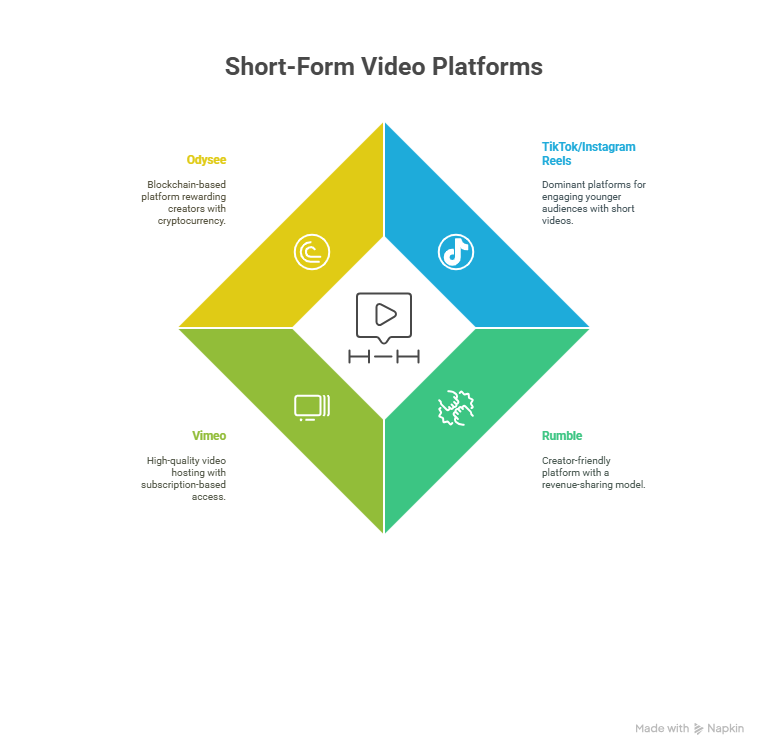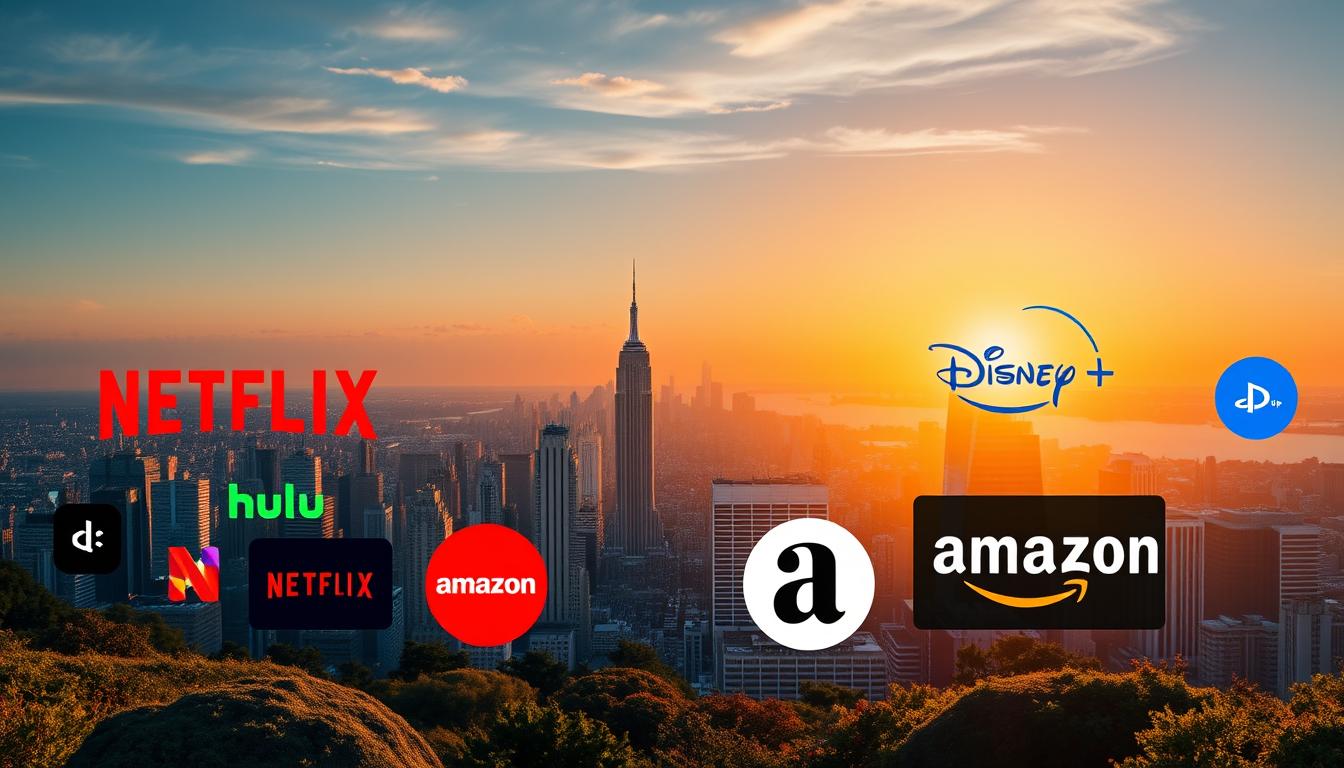As a vlogger, you’re likely no stranger to the challenges of relying on a single platform for your content. With over 500 hours of content being uploaded to YouTube every minute, the competition is fierce, and the algorithms are constantly changing.
Diversifying your content across multiple video streaming platforms is crucial for maximizing your reach and revenue. By exploring youtube alternatives2025, you can grow your audience and maintain creative freedom. This article will explore the best platforms for vloggers, providing you with insights to expand your online presence and make informed decisions about where to focus your efforts.
Whether you’re looking to monetize your content or reach a broader audience, these platforms offer a range of opportunities for creators. By understanding their benefits and features, you can stay ahead in the ever-evolving world of video content.
Why Vloggers Are Exploring New Platforms in 2025
As we head into 2025, vloggers are increasingly looking beyond YouTube for their content needs. This shift is driven by several key factors that are changing the way creators approach their online presence.
Platform Diversification Benefits
Vloggers are spreading their content across multiple online video sharing sites to reduce dependence on a single platform. By doing so, they can:
- Mitigate risks associated with algorithm changes
- Reach different audience demographics
- Tailor content to specific niches or communities
This diversification strategy allows creators to maintain a consistent online presence even if one platform experiences issues.
Monetization Challenges on YouTube
Despite its vast audience, YouTube’s monetization policies can be challenging for vloggers. Issues like demonetization and fluctuating ad revenue are prompting creators to seek out alternative video hosting services with more flexible monetization options.
By exploring other platforms, vloggers can stabilize their income and find more creator-friendly revenue models.
Top YouTube Alternatives 2025 for Content Creators
In 2025, the quest for the best YouTube alternatives is leading creators to explore new and innovative video content platforms. As the digital landscape evolves, vloggers are seeking diverse channels to share their content, engage with their audiences, and monetize their creations effectively.
Rumble: Creator-Friendly Monetization
Rumble is gaining popularity among content creators due to its creator-friendly monetization model. This platform allows vloggers to earn more from their content compared to traditional video sharing sites. Rumble’s focus on fair compensation is attracting a growing number of creators looking for lucrative alternatives to YouTube.
Vimeo: Professional-Grade Hosting
Vimeo is renowned for its high-quality video hosting capabilities, making it a preferred choice among professionals. The platform offers an ad-free viewing experience, enhancing the overall viewer engagement. Vimeo’s emphasis on quality and user experience is a significant draw for creators seeking a more polished presentation of their work.
Odysee: Blockchain-Based Alternative
Odysee stands out as a blockchain-based video platform, offering a decentralized alternative to traditional video sharing sites. This platform provides creators with greater control over their content and rewards them with cryptocurrency for their uploads. Odysee’s innovative approach to content ownership is appealing to vloggers concerned about data privacy.
TikTok and Instagram Reels: Short-Form Video Dominance
TikTok and Instagram Reels continue to dominate the short-form video landscape, providing vloggers with opportunities to engage with younger audiences. These platforms offer vast user bases and various features to enhance content discoverability. Creators are leveraging these platforms to diversify their content and reach a broader audience.
| Platform | Key Feature | Monetization |
|---|---|---|
| Rumble | Creator-friendly model | Revenue sharing |
| Vimeo | High-quality hosting | Subscription-based |
| Odysee | Blockchain-based | Cryptocurrency rewards |
| TikTok/Instagram Reels | Short-form video | Ad revenue and sponsorships |

Each of these platforms offers unique benefits, from monetization options to community engagement, making them attractive alternatives to YouTube. By diversifying their presence across these platforms, content creators can enhance their reach and engagement in 2025.
Next-Generation Video Platforms for Vloggers
As vlogging continues to evolve, creators are turning to next-generation video platforms to expand their reach and diversify their content. These emerging platforms offer innovative features that cater to the diverse needs of vloggers, from live streaming and community building to decentralized hosting and subscription-based models.
Twitch: Live Streaming Powerhouse
Twitch has traditionally been a go-to platform for live streaming, particularly for gamers. However, its appeal is expanding to other types of creators who value its robust tools for live interaction and community building. With features like live chat, polls, and extensions, Twitch enables vloggers to engage with their audience in real-time, fostering a loyal community.
DTube and Theta: Decentralized Video Hosting
DTube and Theta are pioneering decentralized video hosting, leveraging blockchain technology to create censorship-resistant platforms. These platforms prioritize creator autonomy, allowing vloggers to maintain control over their content and revenue. By decentralizing video hosting, DTube and Theta offer a more secure and transparent alternative to traditional video platforms.
Patreon and Ko-fi: Subscription-Based Content Models
Patreon and Ko-fi are redefining the subscription-based content model, enabling vloggers to receive direct support from their fans in exchange for exclusive content or early updates. These platforms provide a financial lifeline for creators, allowing them to focus on producing high-quality content without the pressure of advertising revenue.
Substack Video: Newsletter-Integrated Vlogging
Substack Video integrates vlogging with newsletter platforms, enabling creators to share their content directly with subscribers and foster a more intimate connection with their audience. By combining video content with email newsletters, Substack Video offers a unique way for vloggers to build a loyal following and monetize their content through subscription-based models.
| Platform | Key Features | Benefits for Vloggers |
|---|---|---|
| Twitch | Live streaming, live chat, polls | Real-time interaction, community building |
| DTube and Theta | Decentralized hosting, blockchain technology | Creator autonomy, censorship resistance |
| Patreon and Ko-fi | Subscription-based models, direct fan support | Financial stability, exclusive content |
| Substack Video | Newsletter-integrated vlogging, subscription models | Intimate audience connection, monetization |
Conclusion: Creating Your Multi-Platform Vlogging Strategy
As the digital landscape continues to evolve, vloggers must adapt to stay ahead. Exploring video platform alternatives and next-gen video platforms is crucial for maximizing reach, engagement, and revenue. By understanding the strengths of each platform, vloggers can craft a multi-platform strategy that suits their content style.
Rumble, Vimeo, and Odysee offer unique monetization and hosting options, while TikTok and Instagram Reels dominate short-form video content. Twitch and DTube provide live streaming and decentralized hosting capabilities. Patreon and Ko-fi enable subscription-based models, and Substack Video integrates vlogging with newsletters.
To build a resilient online presence, vloggers should stay flexible, experiment with different platforms, and keep up with the latest trends. By embracing a multi-platform approach, vloggers can diversify their content, engage with their audience across multiple channels, and thrive in the ever-changing world of online video creation.
FAQ
What are the benefits of using YouTube alternatives for vloggers?
Using YouTube alternatives can help vloggers diversify their content, reduce dependence on a single platform, and mitigate the risks associated with algorithm changes or policy updates. Additionally, different platforms offer unique features and audience demographics, allowing creators to tailor their content to specific niches or communities.
How do YouTube alternatives address monetization challenges?
Many YouTube alternatives, such as Rumble and Patreon, offer more flexible or creator-friendly monetization options, allowing vloggers to stabilize their income and reduce their reliance on YouTube’s ad revenue.
What are some popular YouTube alternatives for short-form video content?
TikTok and Instagram Reels are popular platforms for short-form video content, providing vloggers with opportunities to engage with younger audiences and leverage the platforms’ vast user bases.
What is the advantage of using decentralized video hosting platforms like Odysee and DTube?
Decentralized video hosting platforms like Odysee and DTube offer a censorship-resistant alternative to traditional video hosting services, prioritizing creator autonomy and data privacy.
Can I use multiple video streaming platforms simultaneously?
Yes, many vloggers use multiple video streaming platforms simultaneously to maximize their reach and engagement. By diversifying their content across multiple platforms, vloggers can build a more resilient and successful online presence.
How do I choose the best video platform alternatives for my content?
To choose the best video platform alternatives, consider factors such as your target audience, content style, and monetization goals. Research different platforms, such as Vimeo, Twitch, and Substack Video, to determine which ones align best with your needs and objectives.
Are there any video hosting services that offer professional-grade features?
Yes, Vimeo is a popular video hosting service that offers professional-grade features, including high-quality video hosting, customizable players, and advanced analytics.
Can I earn money from my content on YouTube alternatives?
Yes, many YouTube alternatives, such as Rumble, Patreon, and Ko-fi, offer monetization options that allow creators to earn money from their content.

